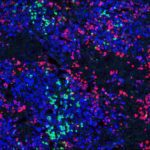Lien vers Pubmed [PMID] – 18617288
J. Hepatol. 2008 Sep;49(3):384-95
BACKGROUND/AIMS: To specify roles of HNF 4 alpha in mouse liver development, we have analyzed the ex vivo morphogenetic potential of HNF4 alpha-null embryonic hepatic cells.
METHODS: Using mice with floxed or deficiency alleles of HNF4 alpha, hepatic cells lacking this transcription factor were explanted into primary culture and derived into cell lines.
RESULTS: Contrary to behavior in vivo where HNF4 alpha-null liver cells fail to show normal polarity and epithelialization, e18.5 hepatic cells in primary culture from mutant embryos show restoration of apical expression of tight junction protein-1 and of transcripts for E-cadherin. Clones of control and HNF4 alpha-null cell lines were indistinguishable, even when differentiation of bile canalicular formation was induced. HNF4 alpha-null and control cell lines showed similar potential to colonize livers of the murine ALB-uPA/SCID model of liver regeneration, but null cells formed only bile ducts and not clusters of hepatocytes. Finally, analysis of mutant embryonic livers revealed a transcriptional signature consistent with a stress response, which could underlie the morphogenetic defects observed in vivo.
CONCLUSIONS: We conclude that the lack of epithelialization characteristic of the HNF4 alpha-null embryonic liver is due, at least in part, to non-cell autonomous defects, and that null cells do not suffer intrinsic defects in polarization.


